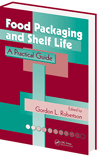Flexible Packaging recently caught up with Carlo Rosso, area sales manager, Bobst Italia S.p.A., for an update on laminating.
Q: What’s new in lamination? Is there anything that Bobst is particularly focused on in this field?
A: Over the past 10 years or so, Bobst has focused on three key aspects of lamination: the optical aspects of the laminated structure (such as brilliancy and maximum transparency), increasingly lower levels of solvent residue at the end of the process and reduction in the consumption of adhesives and solvents.
The technical solutions devised by Bobst to fulfill these three requirements have been the flexo trolley for coating the adhesive and the drying tunnel with dual-technology nozzles.
Q: Is laminating as a whole trending to more compact machines? Why or why not?
A: The reason why Bobst presented two compact laminating machines – the CL 750D multi-technology laminator and the SL 750 solventless laminator – is that we were on the market with equipment for higher production volumes. Nowadays, the production of many flexo converters comprises very short runs, and considering that the U.S. print market is 80 percent flexo, we engineered the compact laminators to fulfill this requirement.
Q: It seems that there’s been a big rise in solventless lamination. Does solvent-based lamination still have a role in the industry?
A: Solventless adhesive is especially suited for laminates that do not require high mechanical or barrier properties. However, this is not enough for high-performance packaging. Considering the strong growth of retortable pouches, pet food and other products that require sterilization, the use of solvent-based adhesive is necessary due to its high bonding characteristics. We’ve even seen instances of migration from solventless to solvent-based adhesives, as on our machines’ production speed and optical quality are definitely better.
Q: Aside from print protection, what are some other key reasons to laminate?
A: Lamination is a must for the majority of modern packaging for many reasons, such as: barrier to light, barrier to the migration of fat, barrier to humidity, sealability of packaging, structure of packaging (standup punching), pasteurization, etc.
Q: What’s something that a lot of people may not know about laminating, but should know about it?
A: The lamination process uses costly materials, such as printed film, adhesive and sometimes aluminum foil, hence great care is paid to the reduction of waste and to the repeatability of the process, namely to quality consistency. These aspects have always been a focus of Bobst engineering. For many high-volume applications and packaging applications, such as snack food, Bobst has perfected the extrusion laminating process on its equipment, as it is a more economical and more environmentally-friendly process. The process enables the production of strong structures by extruding a film between the two substrates to be laminated together without using adhesives.
Bobst
www.bobst.com










